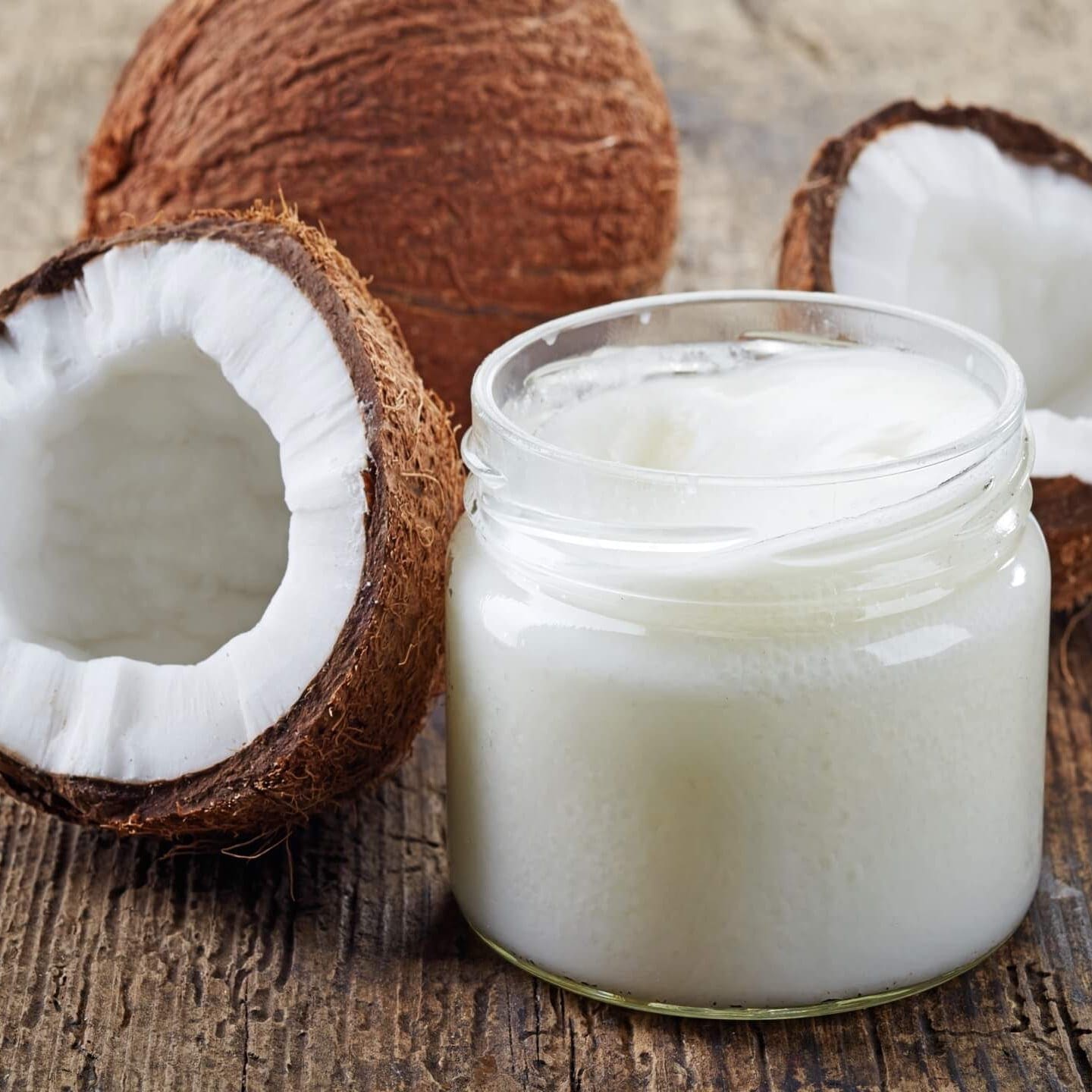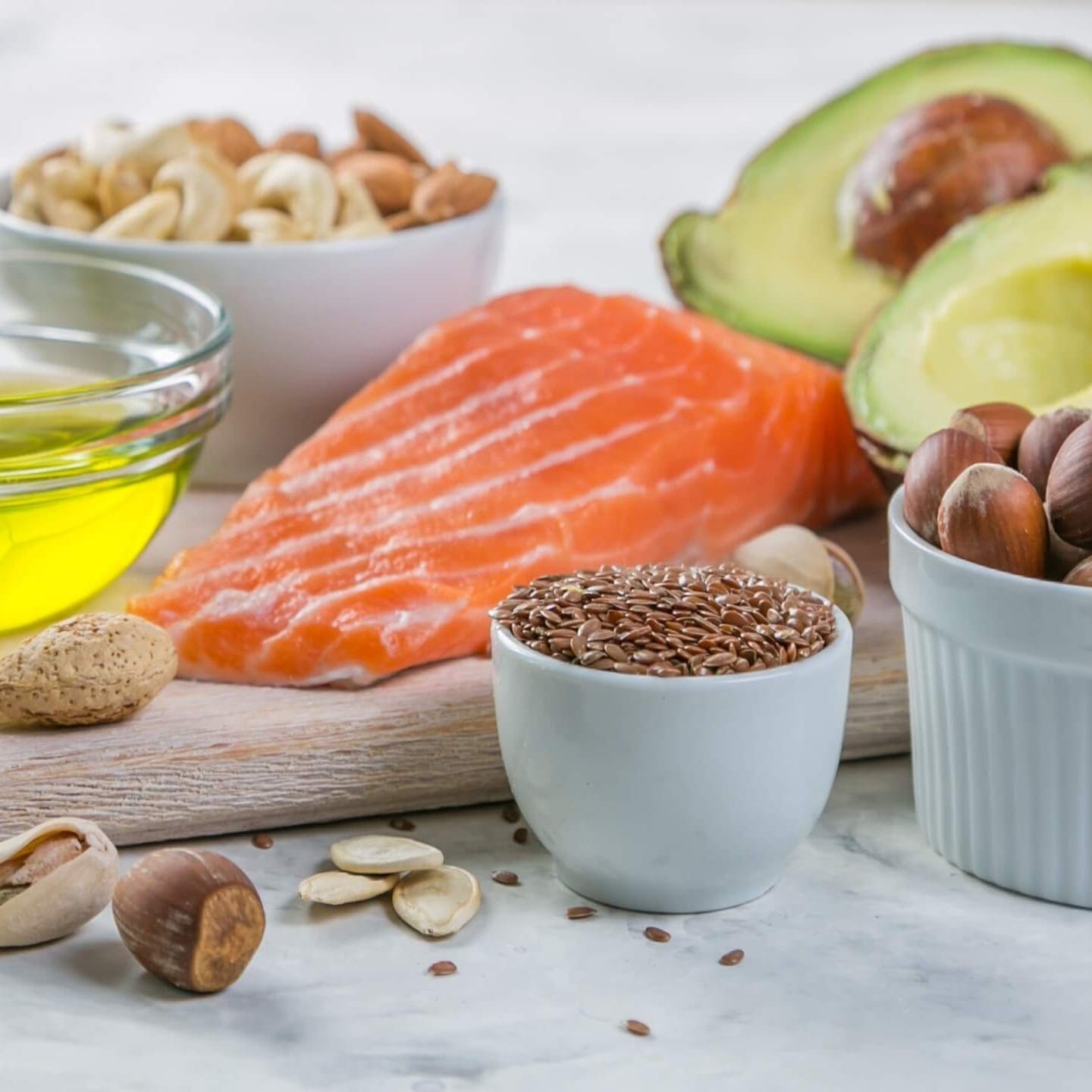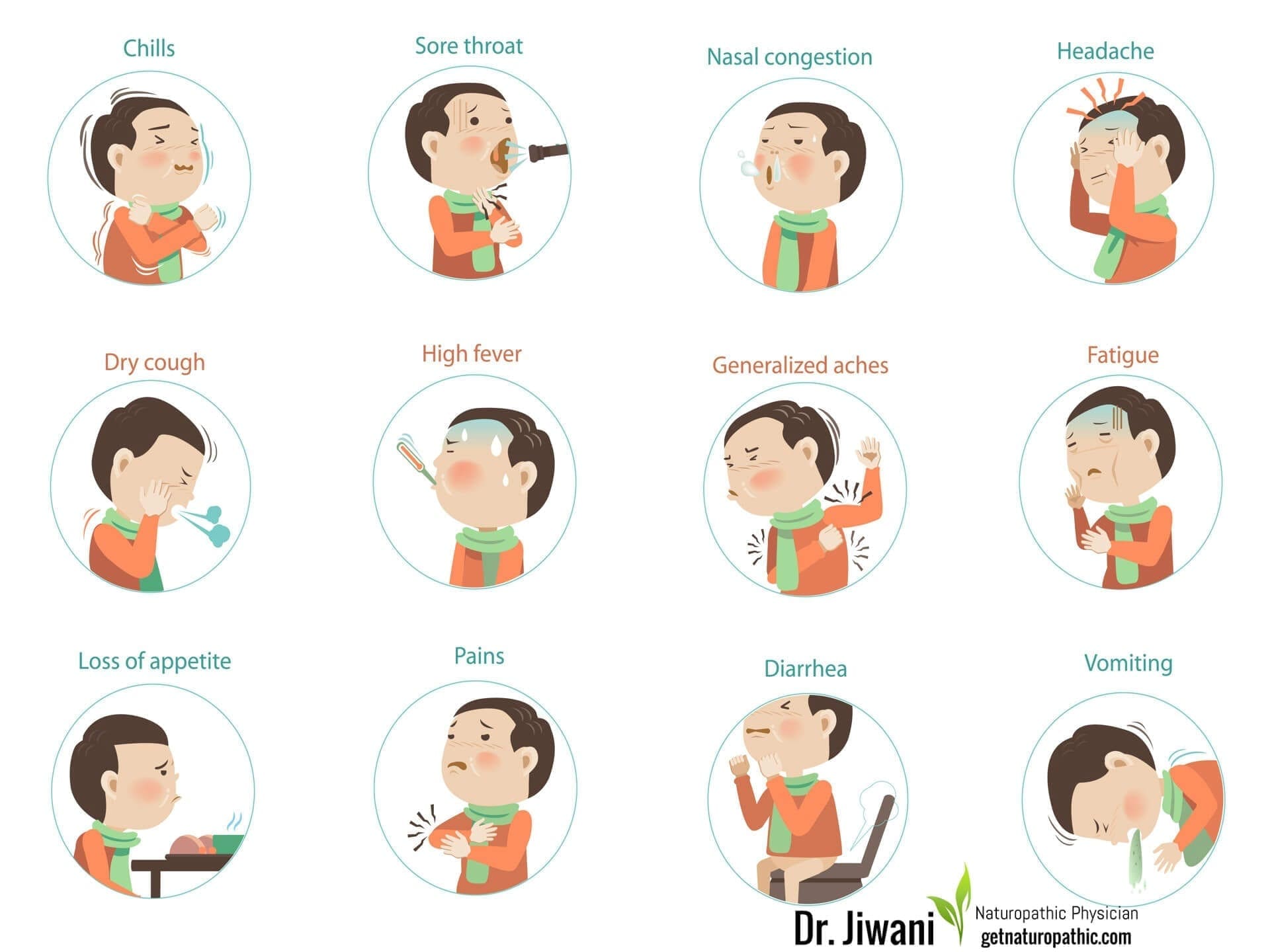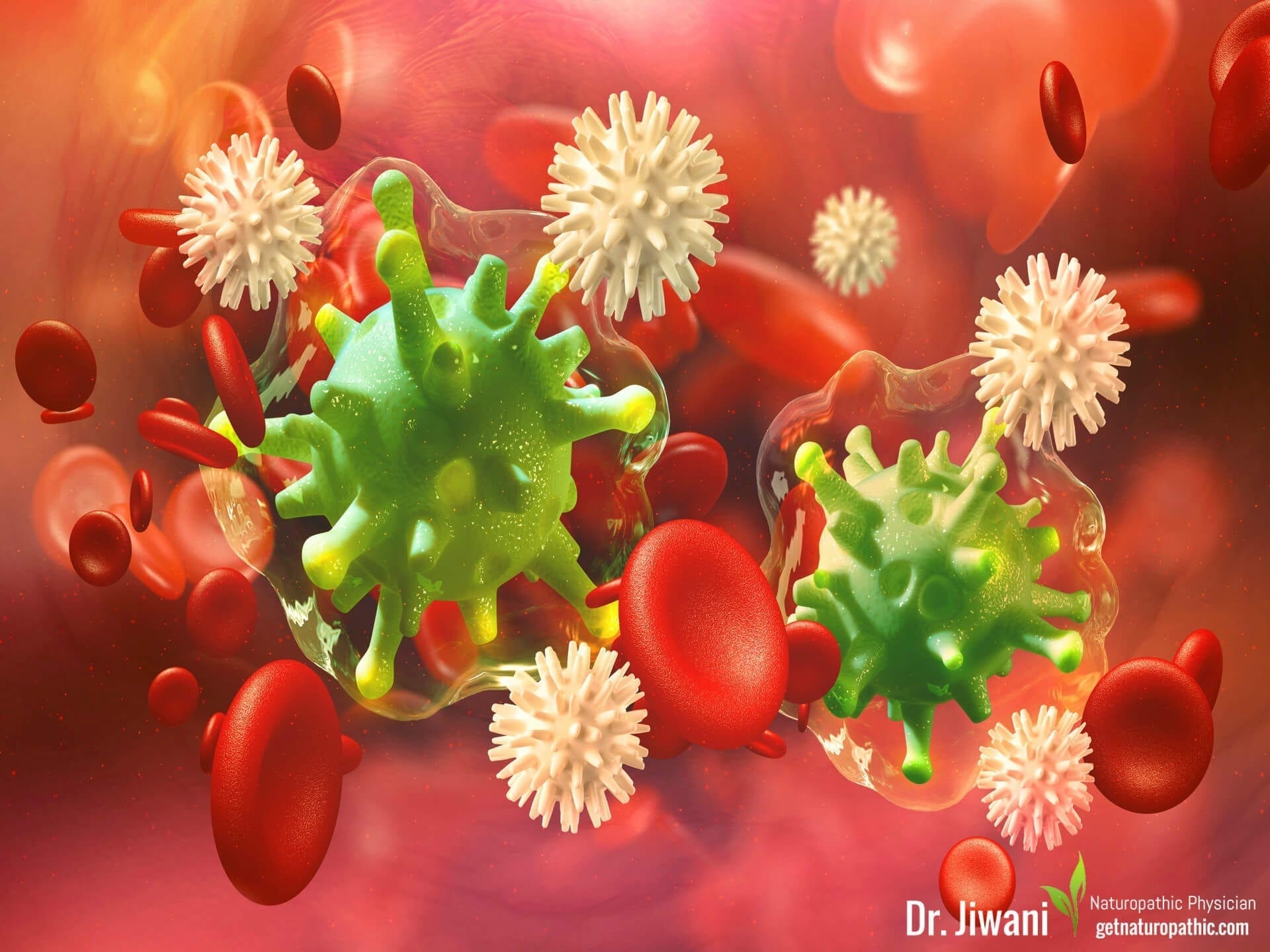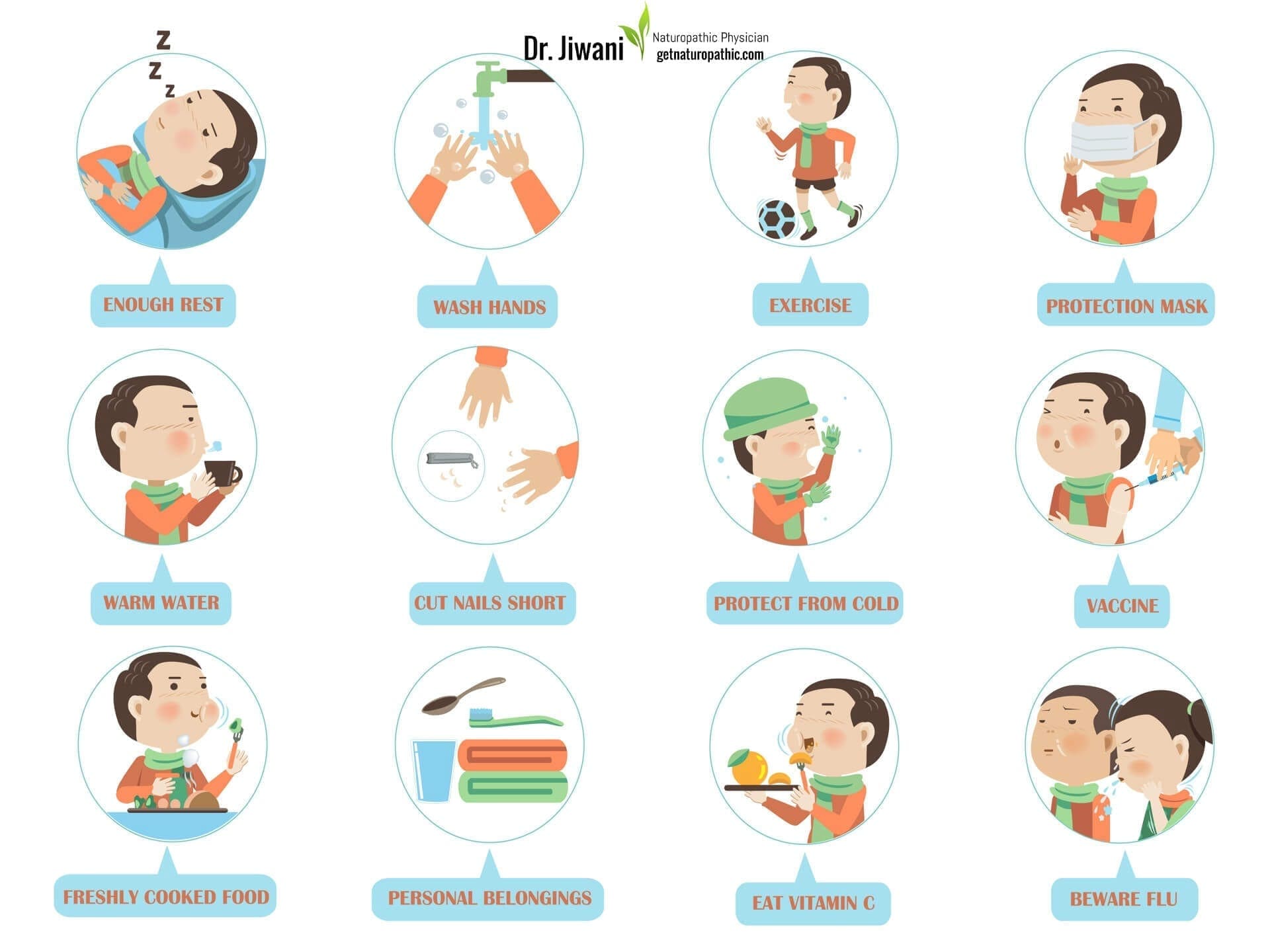Home »
Popular Posts
The Flu or Not the Flu: Differences between the Cold & Flu
(When to Wait & When to Worry)
Naturopathic Nuggets about the Cold & Flu
- Cold & Flu infections are the most common upper respiratory infections affecting millions of North Americans.
- Conditions that can be confused with the Common Cold & Flu include allergic symptoms, sore throats, ear infections & sinus infections.
- The Flu is more severe, wide spread & extreme than the Common Cold. Flu-specific symptoms include fever, intense fatigue & weakness, nausea & vomiting, headaches & body aches.
- Colds resolve completely within 10 days. Conversely, Flu symptoms normally improve within two weeks, although the fatigue and weakness may linger for longer.
- Colds rarely manifest complications, unlike the Flu, which can lead to serious and life-threatening complications.
- Cold & Flu infections are caused by viruses not bacteria. Treating these infections with antibiotics would not only be irrelevant but also harmful.
- Unnecessary antibiotics cause side effects and damage your gut microbiome. This destroys your good bacteria which can lead to Food Allergies, Leaky Gut Syndrome and antibiotic resistant bacteria. Resistant bacteria can cause severe consequences with future infections.
- Cold & Flu infections are contagious while you are sick so it is best to stay home, to rest & drink lots of water.
- To prevent the spread of Colds & Flu you should wash your hands, cover your mouth & nose during coughing or sneezing with a tissue, and use a mask if you are sick and leave the house.
- Please see your doctor to discuss if the Flu vaccine is appropriate for you.
- Please consult your licensed Naturopathic Physician for natural recommendations to prevent & treat the Cold & Flu.
Cold & Flu infections are the most common upper respiratory infections affecting millions of North Americans. They are caused by different viruses yet show similar symptoms. You have a runny & stuffy nose, cough & congestion with a sore throat; so is it a Cold or the Flu? Typically when you have the Flu it is more severe, wide spread & extreme.
The Flu Or Not The Flu? That is The Question!
Cold & Flu: About the Common Cold
A Common Cold starts gradually two days after exposure. Symptoms may include sore throat, sneezing, stuffy or runny nose, cough & general tiredness. A cold peaks within a few days and lasts around 7-10 days. You can expect to be contagious until the symptoms disappear because the cold is spread through coughing, sneezing and touching. Usually, you can still function in a lesser capacity with a cold. However, many missed work & school days may occur. Complications rarely occur from the Common Cold, unlike the Flu.
You’re Contagious During the Entire Cold
Cold & Flu: Confused: Cold or Allergies?
Conditions that can be confused with the Common Cold & Flu include allergic symptoms, sore throats, ear infections and sinus infections. Allergies are an overreaction to a normal immune response. Allergic reactions are not virus-related but also cause your mucous membranes to swell. Hay fever typically results in itchy, watery eyes not seen with a Cold & Flu, plus typical cold symptoms. Also, allergies tend to last the extent of the allergen season, whether spring, summer or fall.
It’s a Cold, a Flu, No! It’s Allergies!!!
People with Allergies have hyperactive immune systems that produce exaggerated responses to something a healthy person would not react to. It is important to understand that having Allergies means your immunity is not healthy.
Allergies Mean Your Immunity is Sick
Cold & Flu: Defining the Differences
Children may get a fever during a cold, although it is rare for adults. That is one key difference between a Cold & Flu. A high fever of over 100 degrees Fahrenheit (38 degrees Celsius), lasting 3-5 days, is common with the Flu. The extent of fatigue that the Flu presents with is another critical difference. Fatigue from the Flu can be debilitating and persist for weeks. The final symptoms that are more specific to the Flu, rather than the Common Cold, are a lack of appetite & vomiting.
Flu = Fever, Extreme Fatigue & Poor Appetite
Cold & Flu: About the Flu
Influenza viral infections, known as the Flu, are the most significant respiratory infections, due to their severity and potential for serious & even life-threatening consequences. The Flu shows up suddenly with fever & chills, sore throat & cough, stuffy & runny nose, headache & body aches, weakness & exhaustion, and possibly even nausea, vomiting & diarrhea. Flu symptoms normally improve within two weeks, although the fatigue and weakness may linger for longer.
The Flu Can Lead to Life-Threatening Conditions
Cold & Flu: What to Do? I’ve Got the Flu!
For optimal recovery, stay home at least 24 hours after your fever is gone without drugs (aspirin or acetaminophen). When you have a fever, that is your body’s way of stimulating your immunity & inflammation to help fight the battle of infection (Evans, Repasky, & Fisher, 2015). In fact, anyone 18 years or under should NOT be given medications by mouth or on the skin containing Aspirin, Ibuprofen, Willow Bark or salicylate products such as “Pepto-Bismol” & “Alka-Seltzer“, to prevent a very rare, deadly complication called Reye’s Syndrome per the CDC.
AVOID Painkillers with the Flu
Cold & Flu: Hazardous Hand Sanitizer
The CDC recommends using hand sanitizer which I don’t agree with, due to its inherent toxicity. The toxic antimicrobial ingredient Triclosan has the same sanitizing effect as soap (Kim, Moon, Lee, & Rhee, 2015), while altering your gut microbiome to cultivate antibiotic-resistant bacteria, affecting immunity, heart function & hormonal imbalance (Weatherly & Gosse, 2018).
Triclosan Has Only Been Banned in Some Products
Cold & Flu: Are You At Risk for Flu Complications?
Serious complications from the Flu can happen to those over 65 years, pregnant women, children under 5 years, infants under 2 years and anyone with chronic medical issues including diabetes, heart disease, asthma & autoimmunity.
Prevention is Key for the Sick, Weak, Frail & Elderly
Cold & Flu: When the Flu Has You Fighting For Your Life
Flu complications can vary from sinus & ear infections, pneumonia, myocarditis (heart inflammation), encephalitis (brain inflammation) or myositis (muscle inflammation) to kidney & lung failure. Chronic health concerns such as asthma or diabetes often worsen during the Flu.
The Flu Can Inflame You to Death
Cold & Flu: Knowing When It’s Emergent
Remember these Emergency Warning Signs of Flu Sickness per the Centers for Disease Control (CDC), and call 911 or proceed to your nearest Emergency Room if you or your family have any of the following:
Children
-
- Fast breathing or trouble breathing
- Bluish skin colour
- Not drinking enough fluids
- Not waking up or not interacting
- Being so irritable that the child does not want to be held
- Flu-like symptoms improve but then return with fever and worse cough
Adults
-
- Difficulty breathing or shortness of breath
- Pain or pressure in the chest or abdomen
- Sudden dizziness
- Confusion
- Severe or persistent vomiting
- Flu-like symptoms that improve but then return with fever and worse cough
Infants
-
- Unable to eat
- Trouble breathing
- No tears when crying
- Significantly fewer wet diapers than normal
Call 911 or Head to the ER
Cold & Flu: Final Thoughts
Ultimately, if you have had persistent symptoms of any kind that you are unsure of, please see your doctor. For assistance with improving your immunity, addressing allergies, treatment and prevention of Colds & Flu, please visit a licensed Naturopathic Physician.
Related Agony from Allergies? Naturopathic Resolutions to Overcome Your Seasonal Suffering
References
Allan GM, Arroll B. Prevention and treatment of the common cold: making sense of the evidence. Canadian Medical Association Journal. 2014 Feb 18;186(3):190-9.
Bragstad K, Emborg HD, Fischer TK, Voldstedlund M, Gubbels S, Andersen B, Mølbak K, Krause TG. Low vaccine effectiveness against influenza A (H3N2) virus among elderly people in Denmark in 2012/13–a rapid epidemiological and virological assessment. Eurosurveillance. 2013 Feb 7;18(6):20397.
DailyMed – ALKA SELTZER- aspirin, anhydrous citric acid, sodium bicarbonate tablet, effervescent [Internet]. Dailymed.nlm.nih.gov. 2018 [cited 7 October 2018]. Available from: https://dailymed.nlm.nih.gov/dailymed/drugInfo.cfm?setid=73e85be6-1236-453b-b41c-37381a054773
Eccles R. Understanding the symptoms of the common cold and influenza. The Lancet Infectious Ddiseases. 2005 Nov 1;5(11):718-25.
Evans SS, Repasky EA, Fisher DT. Fever and the thermal regulation of immunity: the immune system feels the heat. Nature Reviews Immunology. 2015 Jun;15(6):335.
Flannery B, Chung JR, Belongia EA, McLean HQ, Gaglani M, Murthy K, Zimmerman RK, Nowalk MP, Jackson ML, Jackson LA, Monto AS. Interim estimates of 2017–18 seasonal influenza vaccine effectiveness—United States, February 2018. American Journal of Transplantation. 2018 Apr;18(4):1020-5.
Foundation N. What Is Reye’s Syndrome – National Reye’s Syndrome Foundation [Internet]. Reyessyndrome.org. 2018 [cited 7 October 2018]. Available from: http://www.reyessyndrome.org/what.html
Influenza (flu) including seasonal, avian, swine, pandemic, and other. [Internet]. Centers for Disease Control and Prevention. 2018 [cited 7 October 2018]. Available from: https://www.cdc.gov/flu/index.htm
Kim SA, Moon H, Lee K, Rhee MS. Bactericidal effects of triclosan in soap both in vitro and in vivo. Journal of Antimicrobial Chemotherapy. 2015 Sep 15;70(12):3345-52.
Lessler J, Reich NG, Brookmeyer R, Perl TM, Nelson KE, Cummings DA. Incubation periods of acute respiratory viral infections: a systematic review. The Lancet Infectious Diseases. 2009 May 1;9(5):291-300.
Pepto-Bismol ™ [Internet]. Dailymed.nlm.nih.gov. 2018 [cited 7 October 2018]. Available from: https://dailymed.nlm.nih.gov/dailymed/fda/fdaDrugXsl.cfm?setid=33baaf04-498d-44f2-9288-02b8f874f914&type=display
Prevent the Common Cold [Internet]. Centers for Disease Control and Prevention. 2018 [cited 7 October 2018]. Available from: https://www.cdc.gov/features/rhinoviruses/
Taubenberger JK, Morens DM. The pathology of influenza virus infections. Annual Review of Pathology: Mechanisms of Disease. 2008 Feb 28;3:499-522.
Using medication: Using antibiotics correctly and avoiding resistance [Internet]. PubMed Health. 2013 [cited 7 October 2018]. Available from: https://www.ncbi.nlm.nih.gov/pubmedhealth/PMH0087079/
Vaccines: Vac-Gen/Additives in Vaccines Fact Sheet [Internet]. Cdc.gov. 2018 [cited 7 October 2018]. Available from: https://www.cdc.gov/vaccines/vac-gen/additives.htm
Vadalà M, Poddighe D, Laurino C, Palmieri B. Vaccination and autoimmune diseases: is prevention of adverse health effects on the horizon?. EPMA Journal. 2017 Sep 1;8(3):295-311.
Weatherly LM, Gosse JA. Triclosan exposure, transformation, and human health effects. Journal of Toxicology and Environmental Health, Part B. 2017 Nov 17;20(8):447-69.
This information is for educational purposes only and does not advocate self-diagnosis. Due to individual variability, consultation with a licensed health professional, such as a licensed naturopathic physician is highly recommended, prior to starting a natural treatment plan. For further information, see Terms of our Website.
Follow Dr. Jiwani
Popular Posts










